Lab 2: Operation of a Compensated Scope Probe - ECE 420L
Authored By: Joey Yurgelon
Email: yurgelon@unlv.nevada.edu
January 30, 2015
Pre-lab Work:
- Watch the video scope_probe and review scope_probe.pdf (associated notes).
- Vary the parameters in the simulations found in probe.zip to ensure you understand the operation of a compensated 10:1 scope probe.
- From lab 1 ensure that you understand the operation and analysis of simple RC circuits (likely a quiz on this).
- Ensure that you can read/create Bode plots and plot the corresponding signals in the time-domain at a particular frequency.
- Read the write-up seen below before coming to lab
Lab Description:
- Students
will learn the inner workings of the common scope probe, and understand
the conversion an input signal takes from probe to scope.
Lab Requirements:
- Show scope waveforms of a 10:1 probe undercompensated, overcompensated, and compensated correctly.
- Comment
on where the type of scope probe (i.e., 1:1, 10:1, 100:1, etc.) is set
on your scope (some scopes detect the type of probe used automatically).
- Draft
the schematic of a 10:1 scope probe showing: the 9 MEG resistor, 1 MEG
scope input resistance, capacitance of the cable, scope input
capacitance, and capacitance in the probe tip.
- Using
circuit analysis, and reasonable/correct values for the capacitances,
show using circuit analysis and alegbra (no approximations), that the
voltage on the input of the scope is 0.1 the voltage on the probe tip.
- Devise
an experiment, using a scope, pulse generator, and a resistor, to
measure the capacitance of a length of cable. Compare your measurement
results to the value you obtain with a capacitance meter. Make sure you
show your hand calculations.
- Build a voltage divider using two
100k resistors. Apply a 0 to 1 V pulse at 1 MHz to the divider's input.
Measure, and show in your report, the output of the divider when
probing with a cable (having a length greater than or equal to 3 ft)
and then a compensated scope probe. Discuss and explain the differences.
- Finally,
briefly discuss how you would implement a test point on a printed
circuit board so that a known length of cable could be connected
directly to the board and not load the circuitry on the board.
Experimental Results:
Exercise #1: Show Scope waveforms of a 10:1 probe undercompensated, overcompensated, and compensated correctly.
- Top is the LTSpice Simulations and Bottom is the Experimental Results
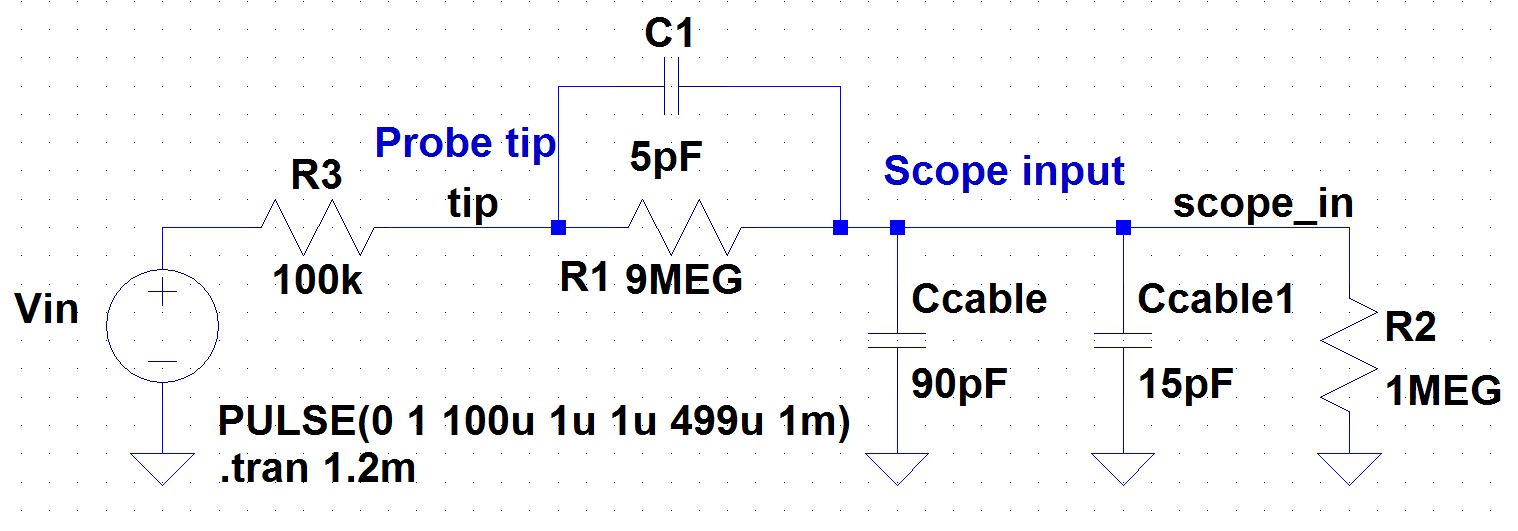 |  | 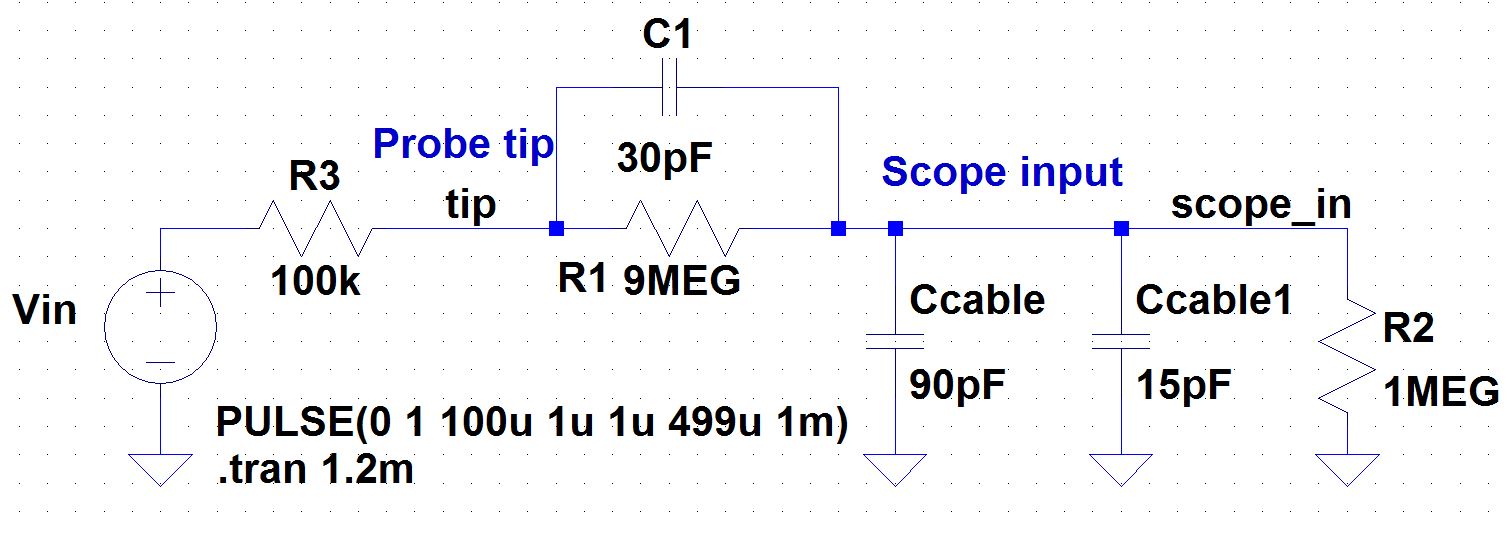 |

Undercompensated Probe Scope Waveform | 
Compensated Probe Scope Waveform | 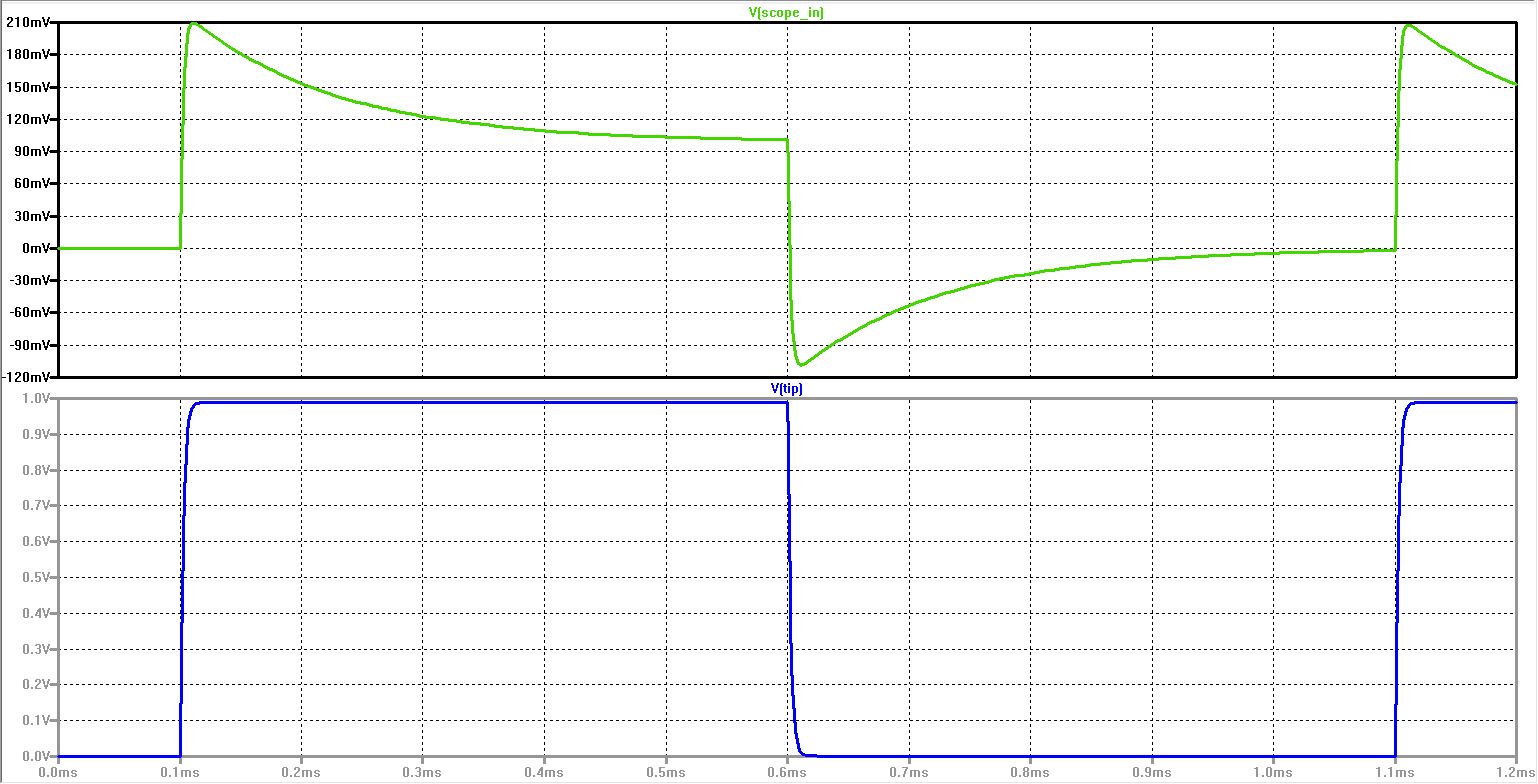
Overcompensated Probe Scope Waveform |
 |  | 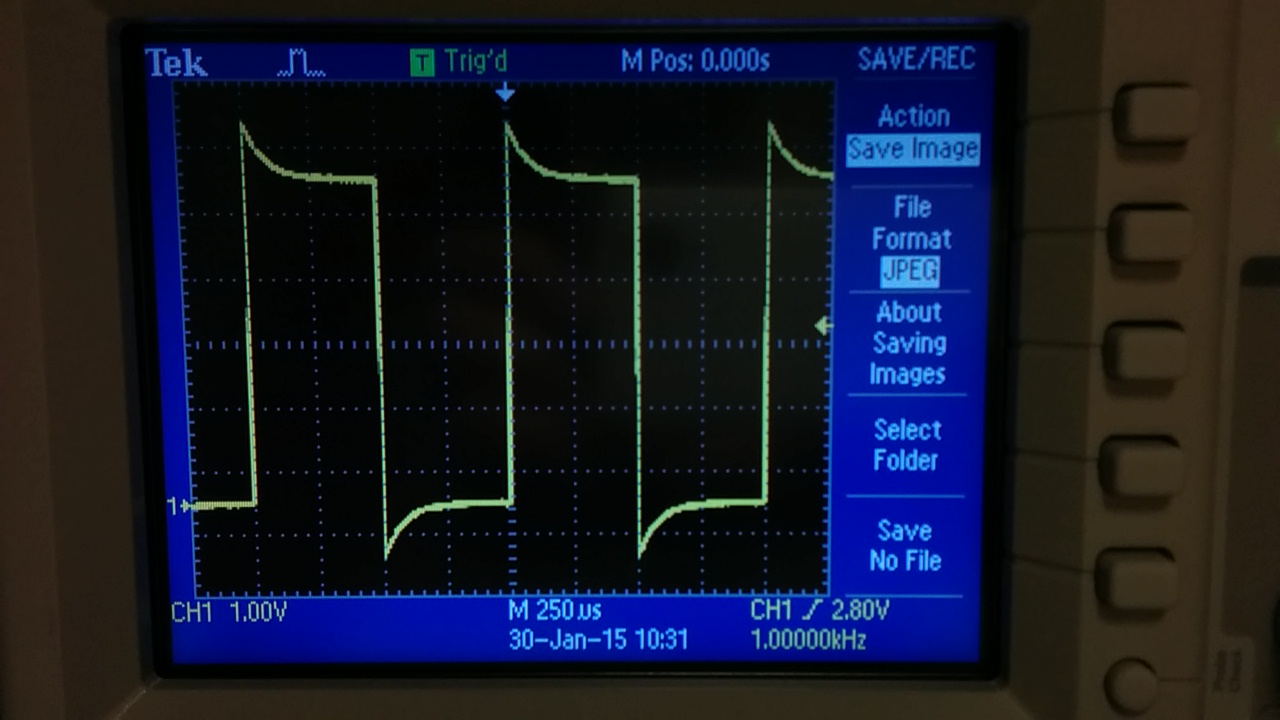 |
Exercise #2: Comment where the type of scope probe (1:1, 10:1, 100:1, etc. ) is set on your scope.
- The
scope probes inside of the lab generally have a way to toggle between
1x and 10x attenuation. It is located on the handle of the probe. Not
all probes in the lab have this feature, however, some of them are a
constant attenuation. If this is the case, they are commonly 10x
probes, and are usually printed on the BNC connector. The scopes also
have a probe compensation portion on their screen that allows the
student to connect to and quickly compensate their probes
correctly.

Probe Compensation on Scope | 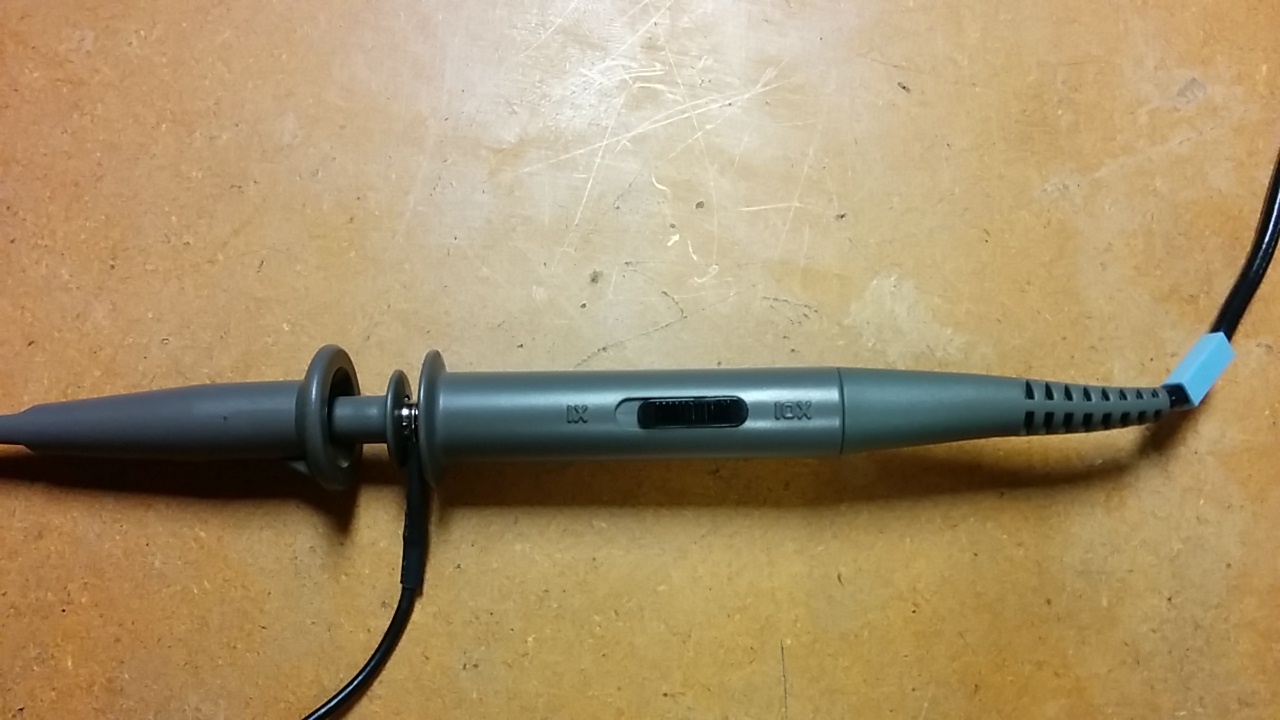
Attenuation switch is located on the body of the probe |
Exercise #3 & #4:
Draft the schematic of a 10:1 scope probe, perform the circuit analysis
to show that the voltage on the input of the scope is 0.1 the voltage
on the probe tip.
- There
are two capacitors that need to be compensated for to offer a correct
reading on the oscilloscope. There is an input capacitance on the
scope, and a capacitance in the cable that may load down the circuit if
a 1:1 probe is used. To compensate for this, a 0Meg resistor is set in
parallel with a variable capacitor inside the probe end. What this
allows the probe to do is act as sort of a voltage divider, and cancel
out the effects of the unwanted capacitance in the scope and line.
Unfortunately, the trade off is the change in signal amplitude as noted
in the calculations. The calculations themselves are pretty straight
forward, however. One can make use of equivalence to simplfy the
circuit into a common voltage divider relation. This relation will be
noted as Vout = Vin* (Z2)/(Z1 + Z2) where Z1 is (R1)/(1+jwR1C1) and Z2
is (R2)/(1+jwR2C2) by parrall impedences. This relationship, once
numbers, are inputted will clearly show that the scope input signal is
1/10 the probe signal.

Circuit Probe Draft Schematic | 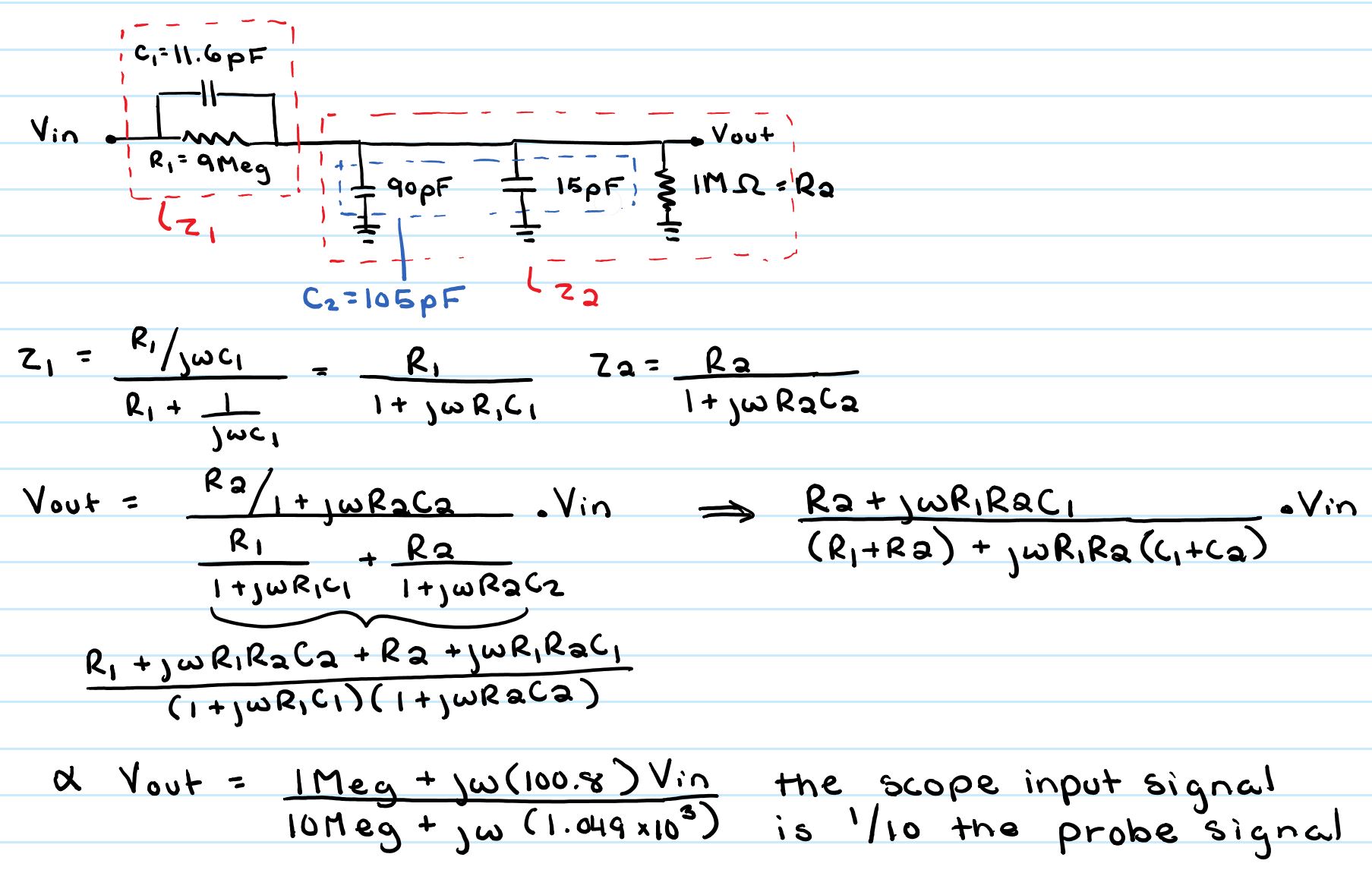
Probe Circuit Analysis |
Exercise #5: Devise an experiment to measure the capacitance of a length of cable. Compare the result with a capacitance meter.
- In
this exercise, we needed to devise an experiment to determine the
unknown capacitance of a coaxial cable. We built a simple RC circuit
that we could relate the rise time to the capacitance in the cable. By
setting up the experiment with a 1k resistor and a 1k Hz pulse signal,
we could determine the rise time of the output. This rise time landed
right around 365ns. From our calculations we could determine the
capacitance by the equation C = Trise/(2.2R). This capacitance came out
to be 165.9pF. To compare our result, we connected the cable to the
multimeter and received a result of 191 pF.
Experimental Setup and Theory | 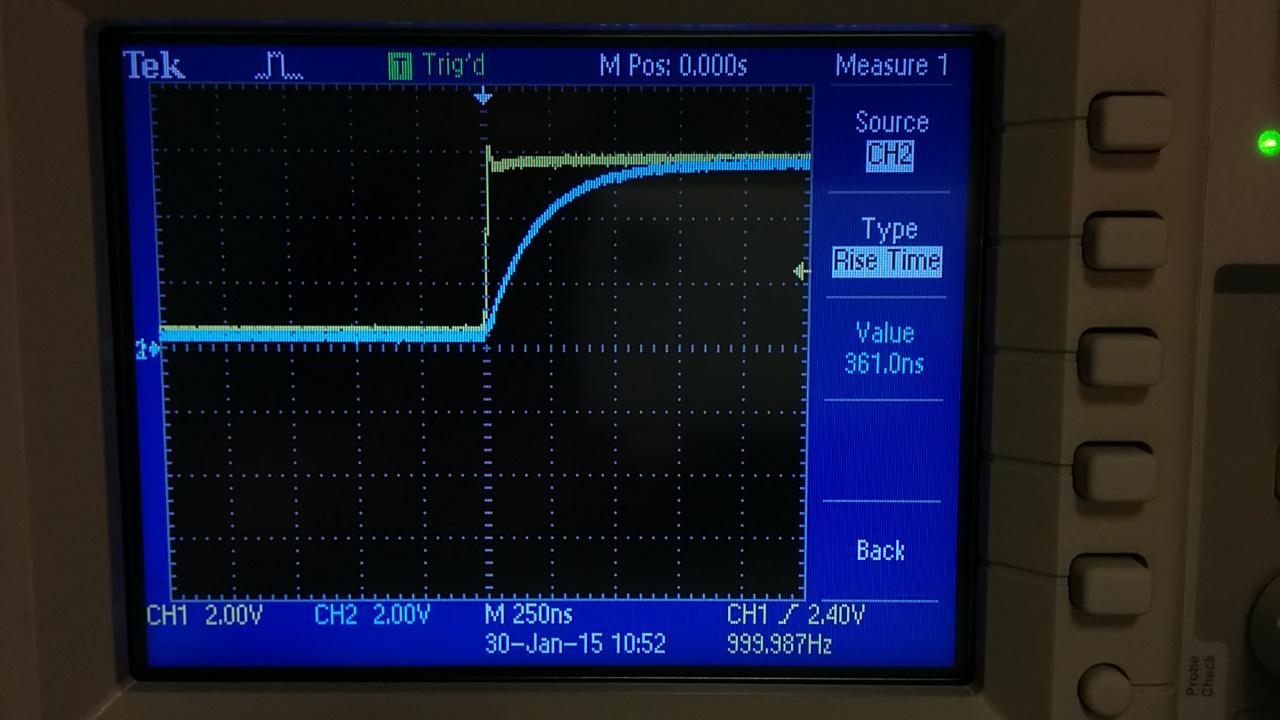
Experimental Rise Time Measurement |

Multimeter Capacitance Measurement |
Exercise #6:
Built a voltage divider using two 100k resistors. Apply a 0 to 1 V
pulse at 1 MHz to the divider's input. Measure, and show in your
report, the output of the divider when probing with a cable (having a
length greater than or equal to 3ft) and then a compensated scope
probe. Discuss and explain the differences.
- One
can see that the difference between the two is the ability to really
measure the amplitude of the signal. The 10:1 probe at 1 MHz, adds
around 10 pF into the circuit. The output seen below shows that the
capacitance nearly forms a perfect integrator of the square wave input.
If the frequency was adjusted, however, the capacitor would have time
to discharge before the next pulse happened which would reduce the DC
offset while preserve more of the square wave input. The 1:1 probe has
the complete opposite effect, the capacitance loading effect just
prevents any sort of reasonable measurement from taking place. When
unsure of our results in the lab, Professor Baker had us sim the 10:1
probe to confirm that at 50% duty cycle with a 1MHz input signal the
offset would be about a 1/3 the input. This can be verified below.
Exercise #7:
Briefly discuss how you would implement a test point on a printed
circuit board so that a known length of cable could be connected
directly to the board and not load the circuitry on the board.
- Just
like the probe set up, one would have connect a resistor and a
capacitor in parallel so that the effects of the scope and attached
cable do not alter the signal trying to be measured.
Return to EE 420L Labs







